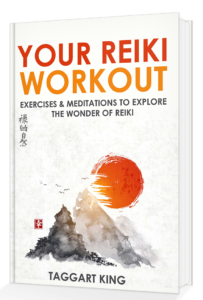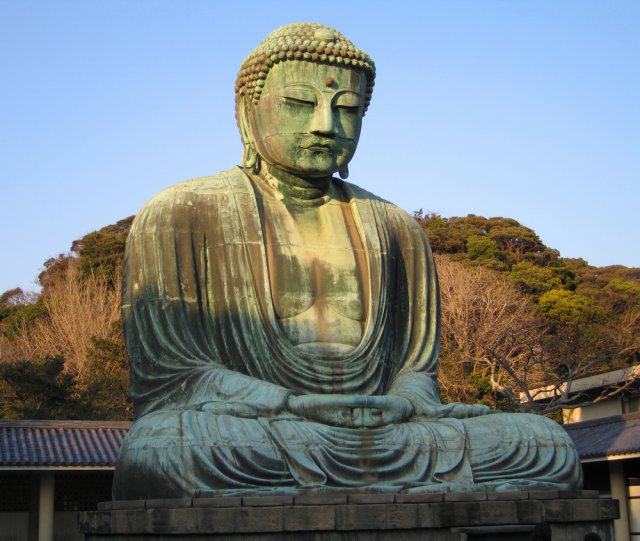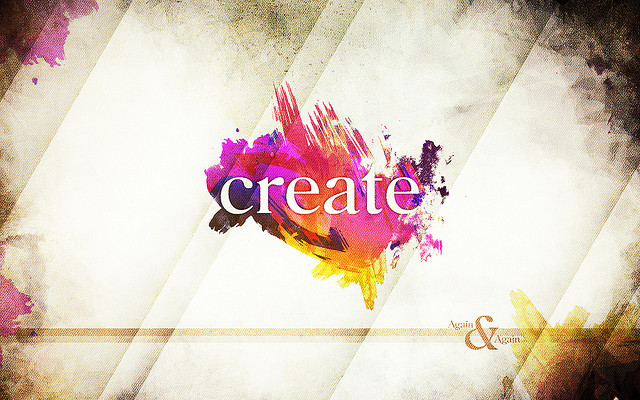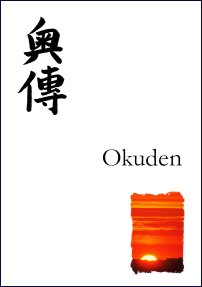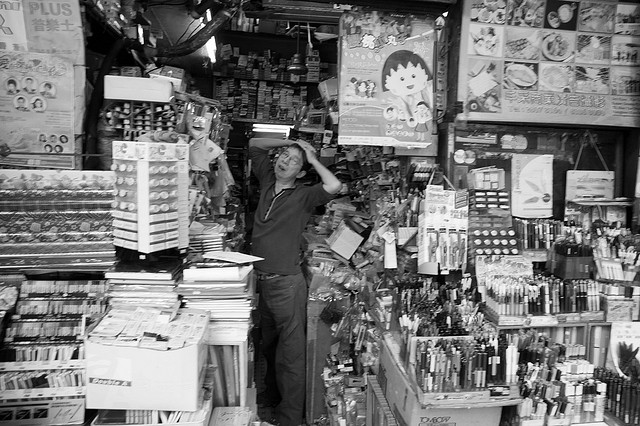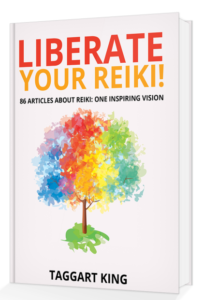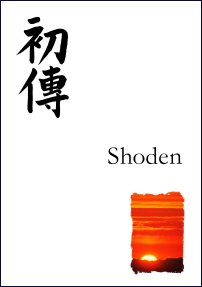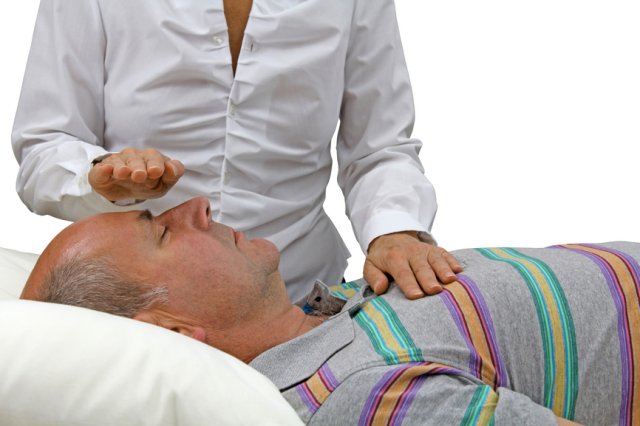People learn Reiki for many reasons and come from an amazing variety of backgrounds, all attending for their own personal reasons. Reiki courses in the UK present a whole variety of approaches, some “traditional” Western-style, some more Japanese in content, some wildly different and almost unrecognisable, some free and intuitive, others dogmatic and based on rules about what you should always do and not do. Reiki is taught in so many ways, and students will tend to imagine that the way that they were taught is the way that Reiki is taught and practised by most other Reiki people.
What I have tried to do in this article is to present a simple guide to what in my view is the essence of Second Degree: what it’s all about and what we should be doing and thinking about to get the most out of our experience of Reiki at this level. My words are addressed to anyone at Second Degree level, or anyone who would like to review the essence of Second Degree.
The first thing I want to say is that there should usually be an interval of a couple of months or so between First and Second Degree if you want to get the most out of your Reiki experience, and that it is unwise to take both Degrees back-to-back over a weekend. We would not take an advanced driving test the day after passing our basic driving test, so why would we believe that moving on to a more ‘advanced’ level with Reiki would be an effective way to learn when we have had no opportunity to get the hang of the basics of First Degree? Can we get the most out of Second Degree when we have had no opportunity to get used to working with and sensing and experiencing energy, when we have had no opportunity to enhance our effectiveness as a channel and our sensitivity to Reiki through regular practice, when we have had no opportunity to become familiar with a standard treatment routine and have had no opportunity to feel comfortable and confident in treating other people? Reiki is not a race, and we need to be familiar with the basics before moving on.
Second Degree is all about:
1. reinforcing or enhancing your connection to the energy 2. learning some symbols which you can use routinely when working on yourself or treating others 3. enhancing your self-healing 4. learning how to effect a strong distant connection (distant healing)
And ideally it is also about opening yourself up to your intuitive side so that you throw away the basic Reiki ‘rule book’ and go freestyle, gearing any treatments towards the individual needs of the recipient.
There are many approaches to doing these things, and I wanted below to touch on each one and to dispel some myths that may have been passed on.
Enhancing your Connection to the energy
On your Second Degree course you will have received some attunements or some empowerments. Attunements are not standard rituals within the world of Reiki and take many forms, some simpler and some more complex. They have evolved and changed greatly during their journey from teacher to teacher in the West. There is no “right way” to carry out an attunement and the individual details of a ritual do not matter a great deal. They all work. Equally, there is no “correct” number of attunements that have to be carried out at Second Degree level. Whether you receive one, two, or three attunements on your course, that is fine.
On your course you may have received some “empowerments” rather than attunements, though these are less common. The word “empowerment”, or “Reiju empowerment”, refers to a connection ritual that has come to us from some Japanese sources, and is closer in essence to the empowerment that Mikao Usui conveyed to his students. If you are receiving empowerments rather than attunements then you really need to have received three of them at least.
What we experience when receiving an attunement or an empowerment will vary a lot. Some people have fireworks and bells and whistles and that’s nice for them; other people notice a lot less, or very little, or even nothing, and that’s fine too. What we feel when we have an attunement is not a guide to how well it has worked for us. Attunements work, and sometimes we will have a strong experience, but it’s not compulsory! Whether we have noticed a lot, or very little, the attunement will have given us what we need.
Since in Mikao Usui’s system you would have received empowerments from him again and again, it would be nice if you could echo this practice by receiving further empowerments (or attunements) and perhaps these might be available at your teacher’s Reiki shares or get-togethers, if they hold them. But it is possible to receive distant Reiju empowerments and various teachers make them freely available as a regular ‘broadcast’. This is not essential, and your connection to Reiki once given does not fizzle out, but it would be a beneficial practice if you could receive regular empowerments from someone.
Being “attuned” to a symbol
For many years within the world of Reiki, people believed that the symbols would not work for you, that they were essentially useless, until you had been “attuned” to the symbol: then it would work for you. Unfortunately the only connection rituals available in the West were ‘attunements’ which involved attuning you to a symbol, so no-one knew how to carry out a ‘symbol-free’ attunement to see if you really needed to be attuned to a symbol for it to work for you.
But in 1999, from Japan, emerged Reiju empowerments, a representation of the empowerments that Usui conferred, and these empowerments do not use symbols. Finally we were able to see if you really needed to be attuned to a symbol for it to work for you. Lo and behold we discovered that the symbols work fine for people who are connected to the energy using Reiju; they work fine for people who are connected to Reiki but who have not been ‘attuned’ to the symbols. It seems that once you are connected to Reiki – and now we know how to achieve this without symbols entering into the process – the symbols will work for you, and in fact any symbol seems to push the energy in a particular direction without you having to be specifically ‘attuned’ to it (whatever that means). The Reiki symbols are simply graphical representations of different aspects of the energy, a way of representing and emphasising what is already there.
“Sacred Symbols”
In some lineages students are not allowed to keep copies of the symbols and have to reproduce them from memory, based on what they learned on their Second Degree course. There is the suggestion that the symbols are sacred and not only sacred but secret, and should not be shown to people who are not involved in Reiki, or people who are at First Degree level. Where this idea came from in the Western Reiki system is not clear, since certainly Dr Hayashi had his students copy out his notes by way of preparing their own manuals, including copying down the symbols.
For me, the Reiki symbols are simply graphical representations of different aspects of the energy, useful tools to assist us in experiencing or becoming consciously aware of different aspects of what we already have, and what is special or sacred is our connection to the source, not the squiggles we might put on a piece of paper.
Because of the ‘Chinese whispers’ that have resulted from students not being allowed to take home hard copies of the Reiki symbols, there are many different versions of the symbols in existence, but they are mainly variations on a theme and they all seem to work in practice. Do remember, though, that the original CKR had an anticlockwise spiral, and to use a version of CKR with a clockwise spiral is to use a symbol that is not part of the Usui/Hayashi/Takata system.
Using Symbols in practice
Some students are taught there is one ‘correct’ way that symbols have to be used. Reiki is not so finicky. The important thing when using a Reiki symbol is to focus your attention on the symbol in some way, so whether you are drawing the symbol with your fingers hovering over the back of your hand as you treat someone, whether you are drawing out the symbol using eye movements, or nose movements, or in your mind’s eye, all approaches will work. You do not need to visualise the symbols in a particular colour and if you can see the symbol in your mind’s eye in its entirety – this takes practice – you can ‘flash’ the whole symbol rather than drawing it out stroke by stroke.
Just because we have been taught some symbols does not mean that we are now obliged to use them all the time when we treat or when we work on ourselves. They can be used to emphasise different aspects of the energy, but this is optional. Use of symbols does seem to boost the flow of energy, so we can use them when it feels appropriate. This is the key: to bring a symbol into a particular part of a treatment when we have a strong feeling that we ought to, to work intuitively rather than following a set method.
I have written in other articles below about the issue of simplicity within Reiki practice, and the complicated way that people have ended up using the Reiki symbols, for example mixing symbols together or using complicated symbol sandwiches. Remember that the simple approach is usually the most effective, and that there is no hard and fast way that you ‘have’ to work with the symbols you have been shown.
By the way, if you have been taught that you have to draw the three Second Degree symbols over your palm each day or else they will stop working for you, you can safely ignore these instructions. The symbols will work for you no matter what you do or don’t do with your palms!
Why the symbols are there
At Second Degree, the prime focus of Reiki is still your self-healing, and the first two symbols are there to help you get to grips with two important energies that will further or deepen your self-healing. Putting the ‘distant healing’ symbol to one side, the other two symbols represent the energies of earth ki and heavenly ki, and we need to fully assimilate these two energies to enhance our self-healing and self-development. If we are going to use these energies when we treat other people, it makes sense to be thoroughly familiar with these energies, to have spent time ‘becoming’ these energies. We can do this by carrying out regular symbol meditations.
Making ‘distant’ connections
The third Reiki symbol that you are introduced to on a Second Degree course is commonly called the ‘distant healing symbol’. We should remember that distant healing is perfectly possible at First Degree level and that we do not need to use a symbol in order to send Reiki to another person: intent is enough. But using this symbol can help us to learn to better ‘click’ into a nice strong merged state.
There is no set form of ritual that ‘has’ to be used in distant healing, there is not set form of words that has to be recited, no established sequence which needs to be reproduced in order for distant healing to be effective, so we can find our own comfortable approach, different from other people’s but equally valid. The details of the ritual that we use are not important. All we need to do is to focus our attention on the recipient and maybe use the symbol in some way, merge with the energy, merge with the recipient, and allow the energy to flow.
Intuitive working
Ideally, Second Degree should be the stage where you start to leave the basic ‘rulebook’ behind and go ‘freestyle’, gearing your treatment towards the recipient’s individual energy needs, so that each treatment will be different, as the recipient’s energy needs change from one treatment session to another. Some students will already be modifying the basic treatment routine by the time that they arrive on their Second Degree course.
Set hand positions and a prescribed scheme to follow are useful things to have at First Degree, and allow the student to feel confident in treating others, but sequences of hand positions can be left behind when we open to intuition. Intuitive treatments seem to do something special for the recipient: when you direct the energy into just the right combination of positions for that person on that occasion you allow the energy to penetrate deeply and this seems to lead to a more profound experience for the recipient. Treatments using intuitively guided hand positions may involve much fewer hand positions being held, and each combination being held for much longer, than in a ‘standard’ treatment.
We recommend that the Japanese “Reiji ho” approach is used to help Second Degree students to open to their intuitive side, since the approach is so simple and seems to work for most people even within a few minutes of practice. The resulting strong belief that the student is “intuitive” is a hugely empowering state and opens many doors.
Finally
Reiki has the potential to make an amazing, positive difference to you and the people around you. Remember that Reiki is simplicity itself, and by taking some steps to work on yourself regularly, and share Reiki with the people close to you, you are embarking on a very special journey. How far you travel on that journey is governed by how many steps you take. Carry on with your Hatsurei and self-treatments, get to grips with the energies of CKR and SHK through regular meditation, find your own comfortable approach to carrying out distant healing, and open yourself to intuitive working. And have fun!
